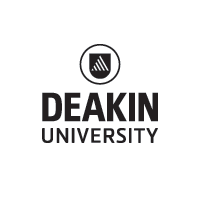Introduction
This topic explores the key concepts of chemical reactions as they relate to:
- physical and chemical change
- hazardous chemicals
- separation of mixtures
- acids and bases
- oxidation and reduction.
Key concepts of chemical reactions
The activities in this topic are designed to explore the following key concepts:
- A substance that undergoes a physical change remains that substance even though it may have changed state or shape.
- A substance that undergoes a chemical change is no longer the original substance.
- In all chemical reactions, the total mass of the reactants equals the total mass of the products.
- In all chemical reactions, the total number and types of atoms in the reactants equal the total number and types of atoms in the products.
- Food atoms do not disappear in digestion and they do not convert to energy in the body.
- In any chemical or physical change, the total amount of energy remains constant.
- Chemical reactions will not occur until the reactants receive enough energy (activation energy) to break chemical bonds.
- In an exothermic reaction, the total energy of the products is less than that of the reactants – heat is released to the surrounding substances.
- In an endothermic reaction, the total energy of the products is more than that of the reactants – heat is taken from the surrounding substances.
- Chemical reactions are equilibrium reactions; that is, forward and reverse reactions take place at the same time.
- Chemical equilibrium can be disturbed by adding or removing any of the products or reactants, by changing the volume, or by changing the temperature.
- Any change that affects the position of an equilibrium state will cause that equilibrium state to shift, if possible, in such a way as to partially oppose the effect of that change.
- A catalyst is a substance that can alter the rate of a chemical reaction without being used up in the reaction.
- For something to combust or burn, fuel, oxygen, and activation energy input are needed.
- An acid is a proton donor; a base is a proton acceptor.
- Redox reactions involve the transfer of electrons from one reactant to another.
Students’ alternative conceptions of chemical reactions
Research into students’ ideas about this topic has identified the following non-scientific conceptions:
- A chemical is a substance made by humans.
- Mixing an acid with a base (without regard to quantities) neutralises the base, resulting in a neutral solution.
- In neutralisation, all the H+ and OH- ions are cancelled.
- Oxidation is the addition of oxygen in a reaction; reduction is the removal of oxygen.
- If a reaction includes oxygen, it is an oxidation reaction.
- Oxidation and reduction reactions can occur independently.
- If water appears during burning, it was present in the wood.
- Smoke formed during combustion was already in the wood.
- Combustion is a change of state of matter: solid or liquid to gas.
- Oxygen aids, but does not participate in, combustion.
- A candle burning is endothermic, because heat is needed to initiate the reaction.
- Chemical reactions are reactions that produce irreversible change.
- Chemical reactions are caused by mixing substances.
- Chemical reactions must be driven by external intervention – for example, heat.
- Energy is used up in a chemical reaction.
- Chemical bonds store energy.
- Energy is created in chemical reactions.
- The products of chemical reactions need not have the same mass as the reactants.
- Water disappears as it evaporates.
